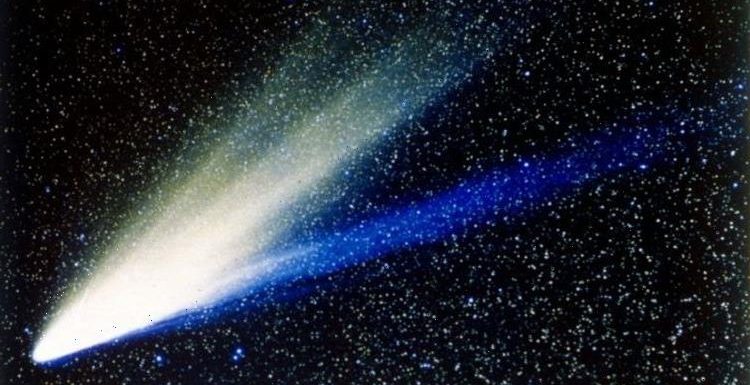
NASA: Hubble telescope spots comet near Jupiter
We use your sign-up to provide content in ways you’ve consented to and to improve our understanding of you. This may include adverts from us and 3rd parties based on our understanding. You can unsubscribe at any time. More info
The Bernardinelli-Bernstein comet was first discovered after astronomers announced they had spotted it on the outer edge of the Solar System in June. The comet, which is estimated to be 60 to 120 miles across, is also said to be arguably the largest comet ever seen.
If the comet is as wide as its top estimate then it would almost be able to stretch from London to Birmingham.
In contrast, Halley’s comet, which is arguably the most well-known comet of all, was just 3.5miles wide.
Gary Bernstein from the University of Pennsylvania said: “We have the privilege of having discovered perhaps the largest comet ever seen – or at least larger than any well-studied one – and caught it early enough for people to watch it evolve as it approaches and warms up.
“It has not visited the Solar System in more than three million years.”

But scientists stress the comet poses no threat to Earth.
The New York Post reports it will instead pass the Sun in 2031 at the earliest and do so at a distance of 10.71 astronomical units.
While the Bernardinelli-Bernstein comet was first discovered in June, astronomers have spent the last six years studying the object.
The comet originated in the Oort Cloud, which according to the Independent is a collection of cosmic bodies made up of dust.
JUST IN: Royal Navy sends Russia and China warning as revolutionary drone launched from sea

Initially, experts were unable to identify a tail or ‘coma’ that usually accompanies a comet.
After three years scientists were finally able to point out the tail and therefore confirm it was a comet.
However, scientists claim it is not possible to view the object with the naked-eye.
Budding amateur astrologers will instead need to use a telescope to see the object.
DON’T MISS:
Cancer breakthrough as wonderdrugs target 80% of lung tumours after ‘unique’ find [LATEST]
Inca breakthrough after mummy discovery on Andes stunned researchers: ‘So well preserved’ [INSIGHT]
Archaeologists amazed by tiny bone found in cave ‘belonging to unknown species of human’ [ANALYSIS]

While people will need to look down the lens to see the comet, it is not believed to have been seen by any other humans.
The comet is estimated to have predated our existence.
Source: Read Full Article